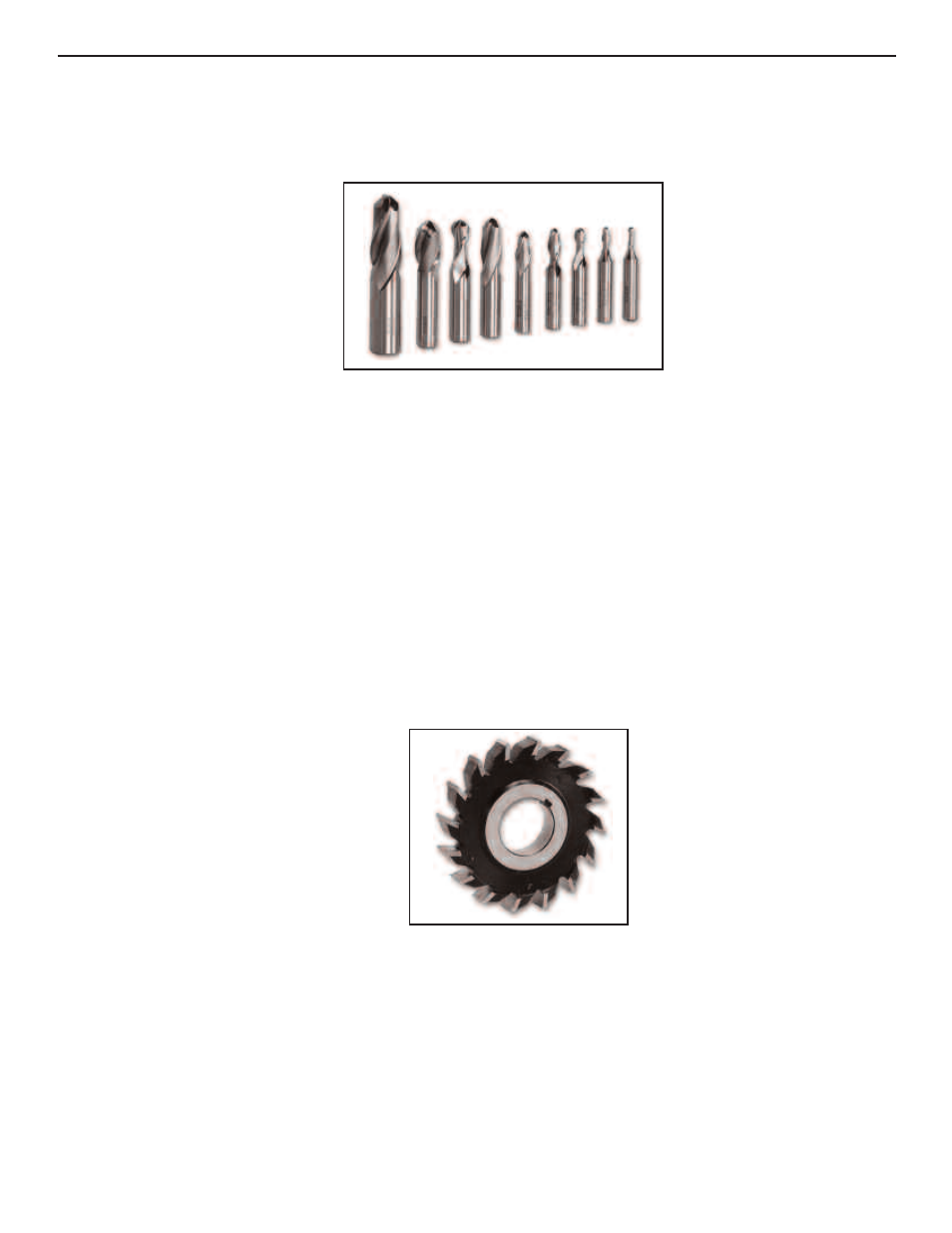Smithy Midas 1220 XL User Manual
Page 91

•
Ball end mills (Figure 21.2) cut slots or fillets with a radius bottom, round out
pockets and bottoms of holes, and do die sinking and die making. Four-fluted ball end
mills with center cutting lips are available.
Figure 21.2 Ball end mills cut slots or fillets with a radius bottom.
•
Roughing end mills remove large amounts of metal rapidly with minimum
horsepower. They have three to eight flutes. Also called hogging end mills, they have
wavy teeth on their periphery that pro-vide many cutting edges, minimizing chatter.
•
T-slot cutters cut T-slots. After machining a groove for the narrow part of the T-slot
with an end or side mill, finish up with the T-slot cutter.
•
Keyseat cutters cut keyseats for Woodruff keys (shaped like a half circle).
•
Shell end mills (Figure 21.3) which mill wide, flat surfaces, have a hole for mounting
on a short arbor. The center of the shell is recessed to provide space fro screw or nut that
fastens the cutter to the arbor. The teeth are usually helical, and diameters are as large
as 6”.
Figure 21.3 Shell end mills mill wide, flat surfaces and mount on arbors.
• Insert-type end mills use replaceable HSS or carbide inserts. Small end mills use two
inserts; larger end mills, three or more.
•
Face milling cutters start in size at 2" and have inserted teeth the periphery and face.
Most of the cutting takes place on the periphery. They are similar to, but larger than, shell
end mills.
Milling Cutters
21-2
Or Visit www.smithy.com